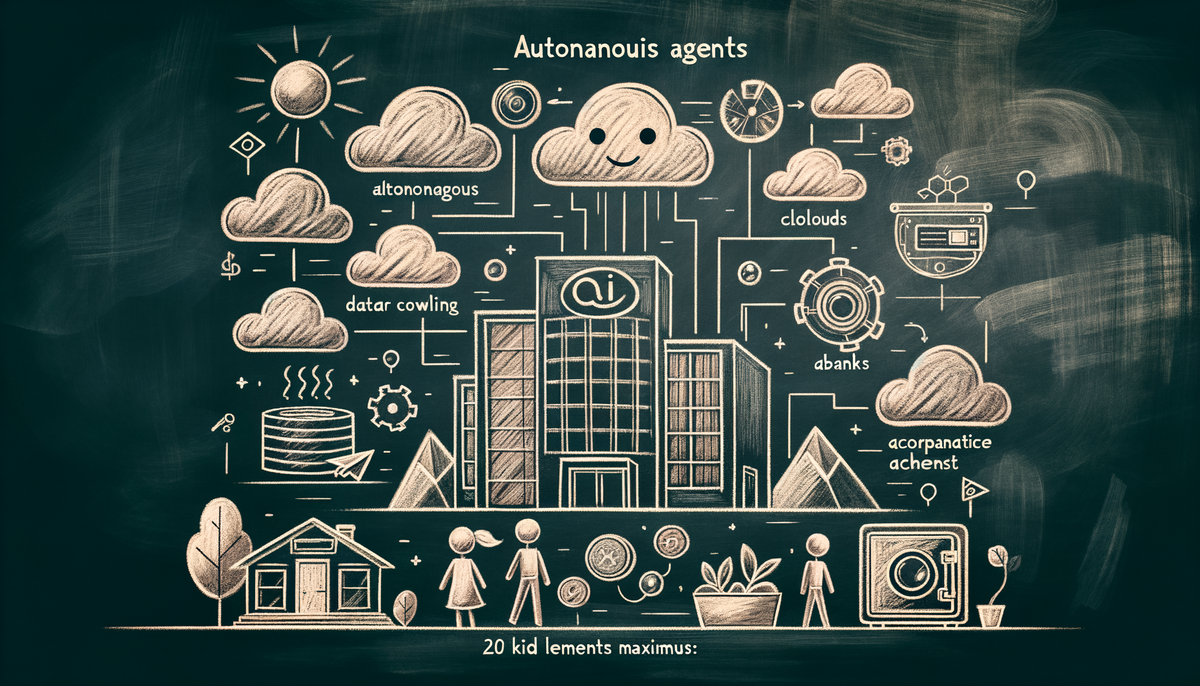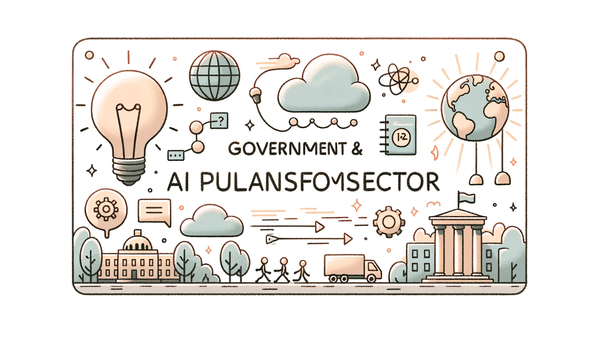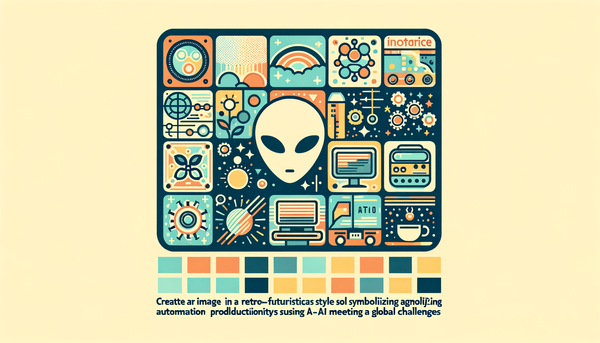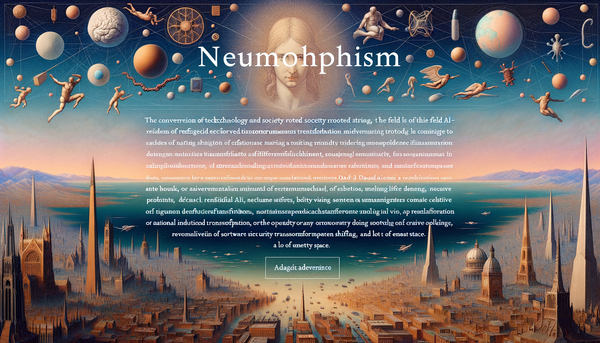AI Developments and Innovations in Various Sectors

Banks loaning billions for a sprawling AI data center in Utah, innovative HBCU initiatives reshaping AI education, and consumer tech breakthroughs all converge into an era where artificial intelligence not only redefines industries but also challenges and enriches human experiences with every new development.
Massive Investments and Expansive Infrastructure in AI
The recent financing of a 100-acre AI data center in Utah by banks with a $2 billion loan is a bold demonstration of the financial sector's confidence in the transformative power of artificial intelligence. This substantial investment reflects an emerging consensus—AI is no longer a futuristic concept, but an essential asset driving growth across sectors. The financing, which may appear as merely an economic strategy at first glance, is also a testament to the real-world impact and long-term potential of advanced computing facilities that serve as the backbone for many modern AI applications.
Establishing mega data centers like the one in Utah requires intricate planning and innovation. The facility will likely integrate cutting-edge technologies to meet the soaring demand for data processing, storage, and cloud computing capabilities. As industry giants and startups alike look to harness the power of AI for their operations, these data centers become strategic hubs that provide the computational force required for breakthroughs in machine learning, deep neural networks, and real-time data analytics.
Infrastructure investments of this magnitude also raise intriguing debates about data security, energy consumption, and environmental sustainability. Financial institutions, in backing such projects, are incentivizing a collaborative model where government agencies, research institutions, and private entities work together to build resilient and scalable infrastructure. This arrangement echoes John McCarthy’s iconic definition, “Artificial intelligence is the science of making machines do things that would require intelligence if done by men,” embodying both the human intellect that fuels innovation and the systems that support it.
Beyond the technical and financial details, this initiative hints at a new era of digital transformation wherein physical and computational frontiers expand to support myriad applications—from natural language processing in customer service to autonomous driving and smart manufacturing.
Transforming Education and Expanding Opportunities Through AI
Across the United States, historically black colleges and universities (HBCUs) are emerging as fertile grounds for AI innovation. These institutions are not only deploying state-of-the-art AI research labs and initiatives but are also reimagining curriculums that integrate machine learning with liberal arts, ethics, and social sciences. Such integration ensures that the humanistic dimensions of AI—critical thinking, ethical reasoning, and empathy—remain at the forefront of its application.
This push for diversified leadership in technology is particularly refreshing, considering the previous critiques regarding AI’s homogeneous leadership. HBCUs are bridging this gap by empowering underserved communities and fostering a culture where a broad spectrum of perspectives contributes to the evolution of AI. In doing so, they are crafting a blueprint for a more inclusive tech future.
The role of AI in education extends beyond advanced research facilities. For instance, AI chatbots have been proposed as a potential solution to alleviate the counselor shortages in high schools while providing round-the-clock support to students. Nevertheless, these systems are not without their critics. Some educators caution that overreliance on automated systems could inadvertently diminish the nuanced, empathetic interactions that a human counselor provides. The careful calibration of such tools is essential to ensure that AI bolsters rather than replaces personal connections in educational environments.
Interestingly, the advent of AI in education is not solely marked by infrastructural investments—it also involves rethinking the teaching paradigms. Consider the emerging hybrid models where educational startups, as highlighted in innovative education initiatives, weave AI into the curriculum while emphasizing the irreplaceable value of human mentorship. By doing so, students are offered a balanced learning experience, blending algorithmic efficiency with human insight.
"Empowering minority institutions in AI is not about creating a separate tech track; it’s about integrating diverse voices into the future of technology." – An advocate for inclusive education
This integrated approach is designed to cultivate a generation of individuals capable of leveraging AI to solve societal challenges, while also navigating the ethical complexities that such powerful technologies inevitably bring to bear.
Consumer Innovations: Smartphones and Wearables Powered by AI
Beyond the realms of education and infrastructure, artificial intelligence is making its mark on consumer technology, as exemplified by TECNO's launch of its Camon 40 series at MWC 2025. The new lineup, headlined by the Camon 40 Premier 5G, is a striking example of how smartphones are being transformed into sophisticated imaging devices and intelligent assistants. Powered by the MediaTek Dimensity 8350 Ultimate chip, these phones are built for swift image capture and processing, leveraging a 50MP Sony LYT-701 sensor and innovative FlashSnap technology for rapid capturing of fleeting moments.
These consumer devices are more than just gadgets—they represent a paradigm shift in how we perceive the interaction between hardware and artificial intelligence. With features such as ultrawide, periscope telephoto lenses, and TECNO's own Universal Tone technology ensuring exemplary skin tone correction, these phones offer an unparalleled blend of art and science in photography. The robust design, underscored by IP68 and IP69 ratings, makes these devices ideal for adventurers and photography enthusiasts alike.
In addition to the smartphones, TECNO has ventured into the realm of wearables with its new AI smart glasses. The glasses come with a highly capable 50MP camera and are equipped with the Ella AI assistant, designed to perform real-time tasks such as object recognition and language translation. The Pro version even integrates built-in displays, paving the way for augmented reality applications that could redefine personal navigation and data visualization on the go.
This type of innovation invites a reflection on the ongoing competition in the technology market. It has often been noted that "The future is already here – it’s just not very evenly distributed," a poignant reminder from William Gibson. Indeed, as companies like Meta and others continue to innovate in wearable tech and augmented reality, TECNO's bold foray into integrating high-end camera systems with AI capabilities demonstrates that even budget-conscious consumers will soon have access to technologies that were once exclusive to high-end markets.
Moreover, these smart devices, with integrated AI, not only enhance consumer experiences by delivering faster, more accurate functionalities but also collect and process data that may contribute to improved personalized services across various applications—from social media to health monitoring. This consumer-driven evolution in AI technology is paralleled by innovations in the enterprise sector and forms part of the broader digital transformation that companies are experiencing today.
Find out more about similar technological leaps in consumer AI in other recent articles published by AI.Biz.
Enterprise Applications: Advancing Networks and Intelligent Business Solutions
Artificial intelligence within the enterprise space is evolving at an unprecedented pace. Major collaborations such as the one between Keysight and Samsung on AI-for-RAN, based on the NVIDIA AI Aerial Platform, serve as a harbinger for the future of network optimization. These collaborations seek to enhance radio access networks, crucial for 5G and upcoming 6G technologies, by leveraging AI to predict, analyze, and dynamically adjust network parameters in real time.
By integrating AI-driven solutions into network infrastructures, companies can achieve higher efficiency, reduced latency, and more reliable communication services, paving the way for advancements in Internet of Things (IoT) applications, autonomous vehicles, and even smart cities. The kind of dynamic orchestration provided by these AI models is what companies increasingly consider a cornerstone of their future technological strategies.
Interestingly, such enterprise-level advancements complement initiatives like NetSuite’s expansion into AI-driven intelligent solutions (refer to our earlier coverage on enterprise AI trends), merging the operational efficiencies of digital services with the creativity of human insight. This synthesis of technology and business expertise catalyzes the development of solutions that are not only economically viable but also resilient in an ever-shifting digital landscape.
As we weigh these developments, Fei-Fei Li’s observation resonates, "Technology could benefit or hurt people, so the usage of tech is the responsibility of humanity as a whole, not just the discoverer." This is a reminder that while technological strides can lead to enormous efficiencies, they must also be harnessed with a keen awareness of their societal and ethical ramifications.
From boosting network capacities in telecommunications to revolutionizing business applications, AI is becoming an omnipresent force that not only redefines operational protocols but also catalyzes innovation across sectors. The future, as predicted in many global strategies, is one where intelligent systems help companies stand out in an increasingly competitive marketplace. In fact, a new global report by Microsoft highlights practical strategies for businesses to leverage AI to gain unique value propositions—a testament to how every industry is now rethinking its approach to digital transformation.
AI Beyond Earth: Space Missions Embracing Artificial Intelligence
The role of artificial intelligence is also rapidly expanding into the final frontier. Amazon Web Services' executive Clint Crosier has presented a compelling vision where AI plays an integral role in space missions. In this paradigm, AI is not merely an onboard tool but a vital ally in the design, execution, and analysis of space exploration endeavors.
Space missions demand high precision and the ability to process massive volumes of data in real time—a challenge that AI is uniquely qualified to meet. From managing satellite constellations to enhancing autonomous navigation in extraterrestrial terrains, AI is proving indispensable. The integration of such advanced technologies is expected to revolutionize operations in space exploration, bringing efficiencies that were once considered unattainable.
As we watch this sector mature, it’s useful to recall that technological frontiers—whether terrestrial or celestial—often share common challenges and opportunities. The critical convergence of high-performance computing, advanced sensors, and sophisticated AI models in space missions is reflective of a broader trend where AI acts as an enabler for human ingenuity. The implications here extend far beyond immediate technical gains; they also signal a new era of exploration powered by machine intelligence working hand in hand with human expertise.
Moreover, such progress in space is consistent with patterns observed in other domains, where innovations in network performance and data analytics more broadly are catalyzed by the integration of AI. Keeping in line with the global drive towards smarter, more resilient systems, these trends reveal an ecosystem that continuously evolves with technological breakthroughs.
Global Roadmaps for an AI-Savvy World
Across global markets, the race to stand out in an AI-savvy world is intensifying. A recent report commissioned by Microsoft emphasizes that fostering a culture of innovation is not merely a matter of adopting technology but also rethinking strategies for investment, talent development, and ethical deployment. Organizations are now compelled to chart individual paths—drawing inspiration from diverse sectors such as education, finance, telecommunications, and consumer tech—to leverage AI in a way that aligns with their unique value propositions.
This is a multifaceted challenge, as companies must balance the technical rigor of implementing AI solutions with the ethical considerations that come with handling sensitive data, ensuring transparency, and preventing bias. In many respects, the journey toward a truly AI-optimized enterprise involves continuous learning and adaptation. The use of AI chatbots, for example, demonstrates both promise and pitfalls: while they can extend support and streamline processes, their implementation necessitates careful oversight to avoid compromising personalized human interactions.
When viewed through a global lens, it is clear that the adoption of AI is as much about culture as it is about technology. Strategic insights from international collaborations and market analyses suggest that companies that excel in these areas are typically those that invest in R&D, foster continuous training, and prioritize ethical frameworks. Whether it’s in cutting-edge sectors like space exploration or in enhancing everyday retail experiences, the philosophy underpinning AI’s evolution emphasizes the importance of combining robust technological systems with versatile human insights.
From a narrative standpoint, one might recall the words of a visionary: "The future is already here – it’s just not very evenly distributed." Such an observation challenges us to think about how to democratize AI’s benefits, ensuring that innovations are accessible across geographies, sectors, and socioeconomic strata. This philosophy is evident in the strategies employed by both traditional industries and novel startups alike, as evidenced by a range of AI-driven initiatives featured in our recent coverage of AI and quantum computing.
Further Readings and Cross-Linkages
For more in-depth explorations of AI innovations and trends, check out these additional pieces from AI.Biz:
- NetSuite Expands AI Capabilities and the Rise of Intelligent Solutions – A deep dive into how enterprise solutions are integrating AI for enhanced business operations.
- How AI Is Transforming the Education Landscape – Exploring how technology startups blend AI and personalized teaching in modern classrooms.
- Amazon's AI Shopping Assistant: A Glimpse Into the Future of Retail – An insightful look into AI’s influence on consumer behavior.
- Nvidia GTC: AI and Quantum Computing in Focus – Covering avant-garde developments at the intersection of AI and next-generation computing.
These articles complement the current dialogue by offering additional perspectives on how various industries are reimagining their futures through artificial intelligence.
Reflecting on AI’s Integrated Future
Whether it is the staggering investments in vast data centers, educational initiatives at minority institutions, or the emergence of smart consumer devices and AI-assisted space missions, the reality is that artificial intelligence is evolving at multiple fronts simultaneously. As businesses, educators, and innovators converge to harness AI’s promise, what unifies these endeavors is an unwavering commitment to pushing the boundaries of what is possible.
Every advancement—no matter how high-tech or sector-specific—carries with it a complex mix of optimism, caution, and strategic foresight. From financial decisions involving billions to the intimate settings of classrooms where AI chatbots might someday support every student in need, these multiple narratives reflect a broader movement: one where technology and humanity are mutually supportive partners in an ever-changing world.
Ultimately, the evolution of artificial intelligence is a story of integration—where robust technologies undergird resilient infrastructures and where innovative services enhance everyday lives. As we collectively navigate this journey, one thing remains abundantly clear: the future of AI is a shared canvas, painted with contributions from every corner of society.




